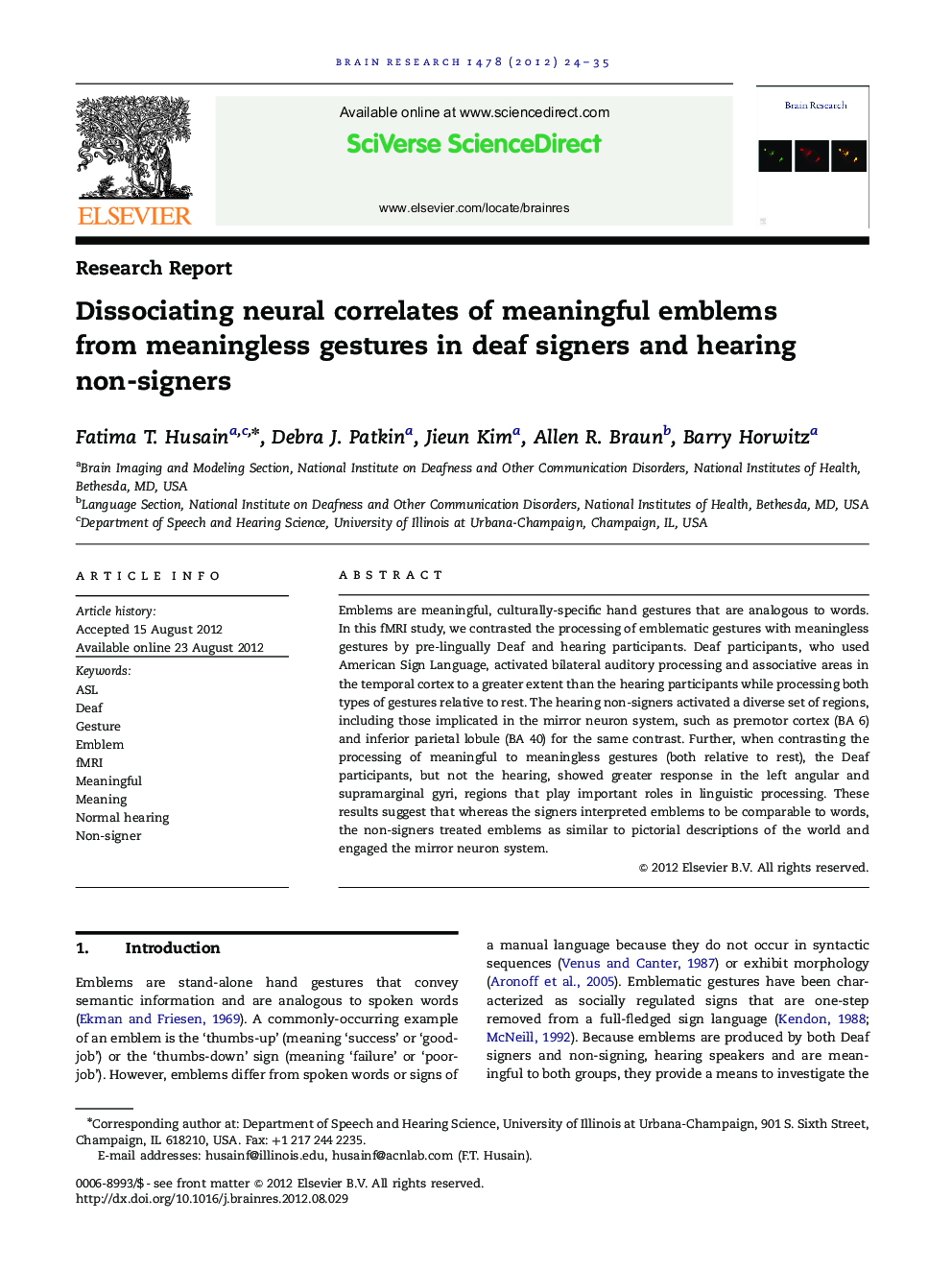| Article ID | Journal | Published Year | Pages | File Type |
|---|---|---|---|---|
| 4325028 | Brain Research | 2012 | 12 Pages |
Emblems are meaningful, culturally-specific hand gestures that are analogous to words. In this fMRI study, we contrasted the processing of emblematic gestures with meaningless gestures by pre-lingually Deaf and hearing participants. Deaf participants, who used American Sign Language, activated bilateral auditory processing and associative areas in the temporal cortex to a greater extent than the hearing participants while processing both types of gestures relative to rest. The hearing non-signers activated a diverse set of regions, including those implicated in the mirror neuron system, such as premotor cortex (BA 6) and inferior parietal lobule (BA 40) for the same contrast. Further, when contrasting the processing of meaningful to meaningless gestures (both relative to rest), the Deaf participants, but not the hearing, showed greater response in the left angular and supramarginal gyri, regions that play important roles in linguistic processing. These results suggest that whereas the signers interpreted emblems to be comparable to words, the non-signers treated emblems as similar to pictorial descriptions of the world and engaged the mirror neuron system.
► We investigate processing of gestures by Deaf signers and hearing non-signers. ► These gestures are of two types: meaningful to both groups or meaningless. ► The two types of gestures are processed differently by the two groups. ► Meaningful gestures are perceived as linguistic units by Deaf signers alone. ► Gestural processing engages the ‘mirror neuron’ system in hearing non-signers.
